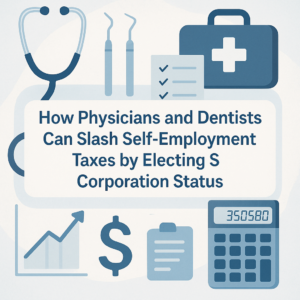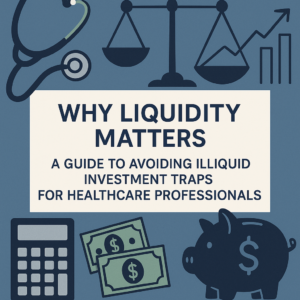In the world of retirement planning, 401(k) plans often steal the spotlight, leaving their 403(b) counterparts in the shadows. While both are valuable tools for securing your financial future, 403(b) plans, typically offered by public employers like school districts and hospitals, have unique intricacies and potential pitfalls that employees must understand. For young healthcare professionals—such as physicians, doctors, dentists, pharmacists, physical therapists, and psychologists—understanding these details is crucial for a well-rounded financial plan.
Understanding 403(b) Plans
The 403(b) plan was created in 1958 by Congress as a mechanism for public schools, non-profit organizations, and certain ministers to save money for retirement. Unlike 401(k) plans that emerged later in the 1970s for private-sector employees, 403(b) plans have traditionally focused on public educators and employees of tax-exempt organizations.
Over the years, 403(b) plans have evolved to include both annuity contracts provided by insurance companies and custodial accounts invested in mutual funds. This evolution has led to a diverse set of retirement savings options that can cater to varying financial needs and goals.
The Basics of 403(b) Plans
A 403(b) plan is a retirement savings vehicle that allows employees to save on a tax-deferred basis. Contributions to a 403(b) plan are made through paycheck deductions, providing employees with the dual advantage of saving for retirement while benefiting from tax deferrals. These contributions reduce taxable income for the year they are made, thereby lowering overall tax liability.
For example, let’s assume a young pharmacist earns $80,000 annually and contributes $5,000 to their 403(b) plan. The contribution reduces their taxable income to $75,000 for that year, resulting in potential tax savings. Over time, these tax-deferred contributions can grow significantly, providing a substantial nest egg for retirement.
Note: There are also Roth 403(b) accounts, which are quite rare. These have different tax treatment, similar to a Roth 401(k).
Potential Tax Implications of 403(b) Plan Withdrawals
While contributions to a 403(b) plan offer immediate tax benefits, it’s important to understand the tax implications of withdrawals. When you start withdrawing funds from your 403(b) plan during retirement, these distributions are taxed as ordinary income. This means that you’ll need to plan for potential tax liabilities and consider the timing of your withdrawals to minimize tax impacts.
Different Types of 403(b) Plans
403(b) plans generally fall into two categories: tax-sheltered annuity (TSA) plans and mutual fund-based plans. Tax-sheltered annuity plans are often provided by insurance companies and come with the guarantee of lifetime income, which can be an appealing option for those seeking financial security in their retirement years. However, the trade-off often comes in the form of higher fees and restrictive plan features.
Mutual fund-based 403(b) plans usually offer a range of investment options that include stocks, bonds, and other securities. These plans tend to have lower fees compared to annuities, making them more attractive to those who prefer flexibility and a wider array of investment choices. For example, a physical therapist may choose a mutual fund-based 403(b) plan to actively manage their investment portfolio and take advantage of market opportunities.
Challenges with 403(b) Plans
One of the biggest issues with 403(b) plans is the high-cost annuities that often fill these plans. These investments usually come with higher fees compared to mutual funds typically found in 401(k) plans. Additionally, employees often face restrictions when trying to sell their holdings, further complicating their retirement strategies.
The lack of liquidity and potential surrender charges associated with annuities can be particularly challenging for healthcare professionals. Imagine a scenario where an emergency requires substantial cash—if that money is tied up in an annuity, accessing it might incur significant penalties, thereby exacerbating financial stress during critical times.
Evaluating Your 403(b) Plan: A Checklist
- Request Plan Documents: Obtain and review your plan’s summary plan description (SPD), investment option list, and fee disclosure documents. These documents provide a detailed overview of your plan’s features, investment choices, and associated costs.
- Compare Fees: Use online tools or consult a financial advisor to compare the fees associated with your 403(b) plan’s investment options to industry benchmarks. Higher-than-average fees can significantly impact your retirement savings over time.
- Assess Investment Options: Evaluate the performance and risk profiles of the investment options available within your plan. Diversification is key to managing risk, so ensure you have a balanced mix of asset classes that align with your risk tolerance and retirement timeline.
- Understand Annuity Products: If your plan includes annuity products, make sure you understand the associated fees, surrender charges, and liquidity restrictions. Consider whether these products align with your retirement goals and financial needs.
Questions to Ask Your Plan Sponsor
Engaging with your plan sponsor is an essential part of understanding and optimizing your 403(b) plan. Here’s a list of questions to ask:
- What Are the Fees Associated with My Plan? Ask for a detailed breakdown of all fees, including administrative charges, fund management fees, and any hidden costs.
- What Investment Options Are Available? Inquire about the range of investment options, including any annuity products, mutual funds, or other securities.
- Is There a Match on Contributions? Find out if your employer offers matching contributions and how you can maximize this benefit.
- What Are the Withdrawal Rules? Understand the rules and penalties associated with withdrawing funds from your 403(b) plan, both before and after retirement.
- Are There Any Recent Changes or Updates to the Plan? Stay informed about any new regulatory changes, investment options, or modifications to the plan that may impact your retirement strategy.
- How Are Investment Options Selected and Monitored? Clarify how the plan sponsor selects and monitors the investment options offered in the plan. Understanding this process can provide insights into the quality and oversight of your plan.
Understanding and managing your 403(b) plan is crucial for building a robust financial foundation. By staying informed, asking the right questions, and consulting knowledgeable professionals, you can navigate the complexities of your plan and make decisions that support your long-term financial well-being.






